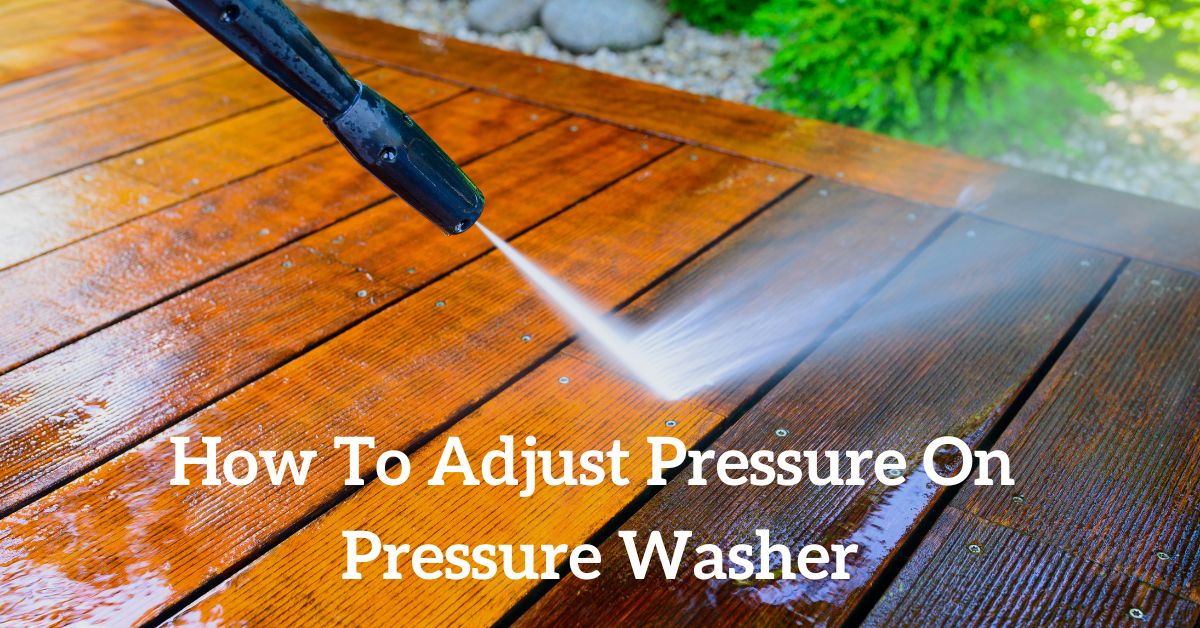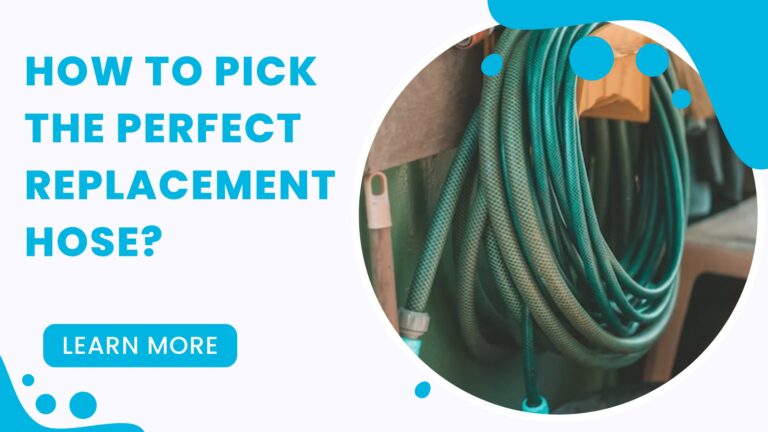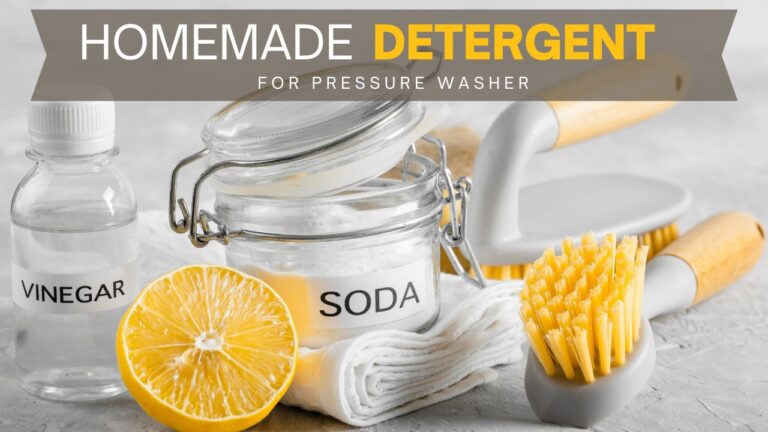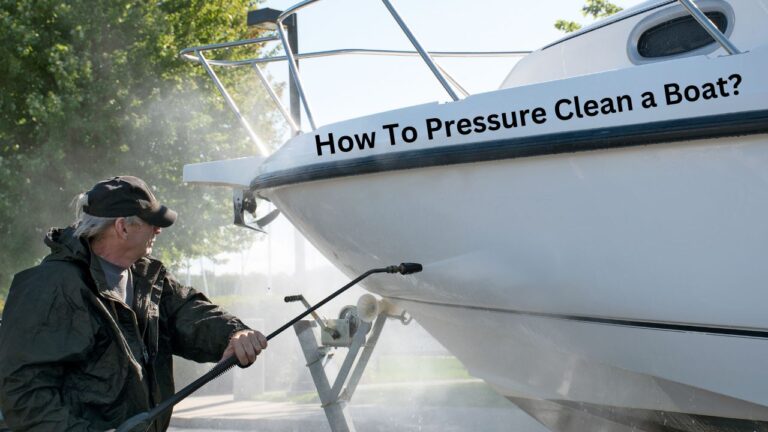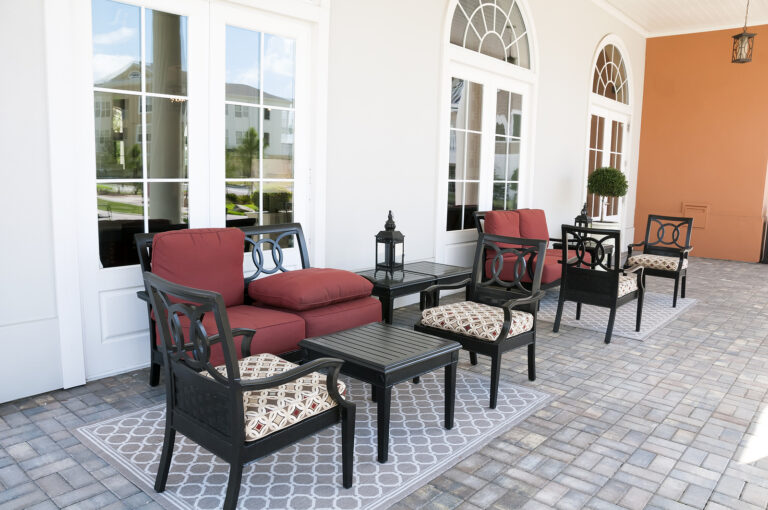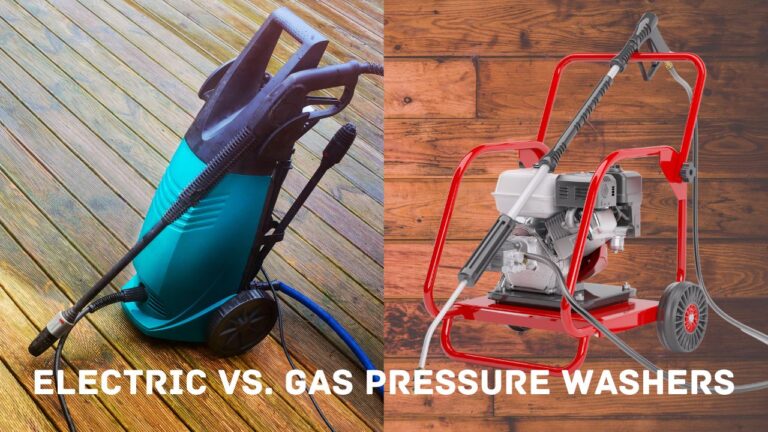How To Adjust Pressure On Pressure Washer? 3 Easy Ways
Pressure washers are an incredibly versatile tool for taking care of several cleaning jobs with just a single device. You can have your patio or backyard area ready and cleaned up for your summer entertainment in no time with pressure washers. You can effortlessly clean your wooden decking, vinyl sidings, and all types of floors and ensure they don’t get infested by molds and nasty contaminations.
Not only that, but you can also have your cars all washed up and shiny effortlessly with pressure washers. We all know how quickly they lose their magnificent look with just the littlest amount of dirt.
However, pressure washers can become challenging if they are not adjusted for optimal pressure for different surfaces and their longevity. This guide will quickly learn how to adjust pressure on the pressure washer. We will also discuss how to adjust the unloader valve on the pressure washer and why you need to do so.
Why Do You Need To Adjust Pressure On Pressure Washer?
There are two main reasons you should adjust the pressure on a pressure washer. For one, the right amount of pressure prolongs the life of the pressure washer. This is because the overall use of pressure washers is measured in usage hours. The gentler you are with it, the lesser the wear and tear will be, and the longer it will last.

For the second reason, you need different pressures for cleaning different surfaces. For example, a dirty concrete floor would require much higher pressure than your more sensitive car surface. Some ideal pressures for different surfaces are discussed in the next section.
What are the pressure ranges of different pressure washers, and what’s the recommended pressure for cleaning different surfaces?
Before we get into how to adjust pressure on the pressure washer pump, we need to discuss some ideal pressure ranges. This will help you get the most efficient cleaning without overworking the pressure washer.
- The ideal range for most pressure washers is 1300-1700 PSI
- This is about 1.5 gallons of water flowing through your pressure washer at a time
- Most electric pressure washers can produce 1300-1800 PSI water pressure
- Gasoline-powered pressure washers can produce up to 2000-2800 PSI for tougher cleaning jobs
Here are some recommended values for different surfaces. You can use these as inspiration, but always read the user manual to better decide the pressure value.
| Surface/Application | Pressure (PSI) |
| Concrete Floor | 3000 |
| Docks & Decks | 2500 – 4000 |
| Boats or ATVs | 3000 – 4000 |
| Striping off paint | 4000 |
| Vinyl Surfaces | 1200 – 1600 |
| Cars and Automobiles | 1200 – 1900 |
| Motorcycles, Bikes, and Scooters | 1500 |
How To Adjust Pressure On Pressure Washer?
Okay, so now we have some idea about pressure ranges, we can discuss how to adjust the pressure on electric pressure washers and gas pressure washers.
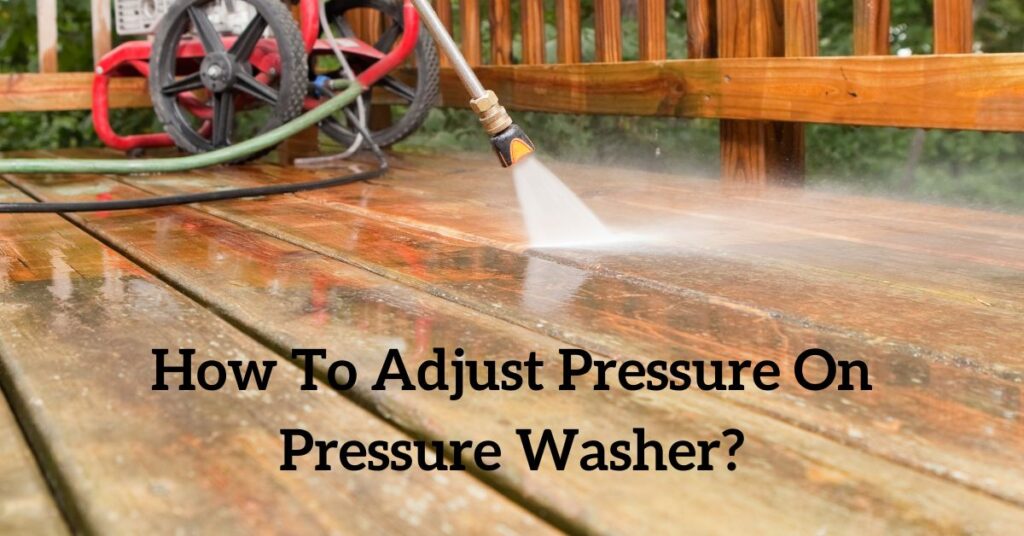
Of course, the most obvious one is to move closer or further; voila, you have automatic pressure adjustment.
But obviously, that’s the crudest method, and you have no idea about the pressure value, and you have to rely on your gut feelings to get the right amount of pressure. So, here are the methods to adjust the pressure on Simpson pressure washers, Troy Bilt pressure washers, and other popular brands out there.
1. Adjusting The Regulator On The Pump
Some pressure washers have an adjustable regulator on the pump or an adjustment valve on its main body. It is usually a knob attached to the water output port, and you can control it by simply rotating it clockwise or anticlockwise. You can increase the pressure by turning it clockwise and reduce it by turning the regulator on the pump anticlockwise.
The Primary Purpose Of The Regulator On The Pump Isn’t Usually To Control The Pressure, here’s why:
While the regulator allows you to adjust pressure, it isn’t convenient to do so. This is because you will have to walk back to the main body whenever you want to adjust the pressure.
However, the regulator serves another more important purpose, and that’s when the said regulator is known as the unloader valve.
Pressure Washer Unloader Valve
The pressure washer unloader valve is a safety switch that works as a pressure relief valve.
When the machine is powered on, the pump builds up the water pressure, which then gets released via the spray gun. When you aren’t using the spray gun – when attending an important call or chasing your unleashed dog on the road – the pressure can get built up to dangerous levels and damage your pressure washer.
The unloader valve sends the pressurized water into a by-pass, cycling between the outlet, inlet, and water tank of the pump.
The pressure washer unloader valve adjustment without a gauge is relatively simple, as you can do it by rotating the valve clockwise or anticlockwise. But to get accurate pressure values, it is recommended that you use a pressure gauge.
2. Regulator On The Wand
Most pressure washers today already come pre-equipped with a regulator on the spray wand. As mentioned earlier, pressure washers are a very versatile tool, so it only makes sense to make them more practical to use, right?
In addition to improving ease of use, having regulators on the wand serves another essential function. It reduces the need for more moving parts on the machine itself, thereby reducing the complexity of design and reducing wear and tear (because of lesser moving parts).
To adjust pressure with the help of the regulator on the wand, you have to rotate the regulator, and you will have pressure adjusted. It works just like a nozzle, only without the detachable nozzles.
3. Detachable Nozzles
While regulators on the wand are pretty popular, detachable nozzles for pressure washers have their fair share of the market. You can attach a nozzle of your choice to the spray gun, which is most suitable for the cleaning job.
The nozzles allow the water to come out at different spray angles. A nozzle with a lower angle will produce the most pressure and vice versa.
With that said, the answer to how to adjust the pressure on the Troy Bilt pressure washer or pressure washer from any brand with the help of nozzles is incomplete without considering the type of surface and the nature of your cleaning job.
So, here’s a short guide to selecting the best nozzle according to the application.
| Color | Degree | Pressure | ✔️ Application | ❌ Not Suitable For |
| Black | 60 | Very Low | Light Cleaning, Applying Soap | Stubborn Stains |
| White | 40 | Low | Windows And Fragile Surfaces | Tough Deposits |
| Green | 25 | Moderate | Patios, Decks, and Car Beds, Suitable For Homes | Hard Stains And Stubborn Debris |
| Yellow | 15 | Moderately High | Stripping Off Paint, Very Stubborn Dirt On Trucks | Soft And Fragile Surfaces |
| Red | 0 | Very High | Metal Surfaces With Rust And Hard Dirt, Suitable For Commercial And Industrial Use | Vehicles, Sidings, Household Uses |
FAQs
Can you adjust the water pressure on a pressure washer?
Yes, you can certainly adjust the water pressure on a pressure washer. Manufacturers know it’s an important feature and would include it in newer models via a regulator on the wand. All you have to do is rotate the regulator clockwise or anticlockwise to adjust pressure. The other ways to control water pressure is through nozzles or the regulator on the pump, aka unloader valve.
How do you adjust a pressure washer pump?
To adjust water pressure via the pressure washer pump, you will have to locate the unloader valve, which is usually located near the water output port. Simply rotate it clockwise to increase pressure or anticlockwise to reduce pressure.
Can you adjust the GPM on a pressure washer?
The GPM, gallons-per-minute, is another term for controlling water pressure in pressure washers. When you increase water pressure, you restrict the water flow by reducing the surface area at the wand tip. The restricting opening means the water will have less area to flow through. Hence it will flow with high pressure. This means a lower GPM but at a higher pressure and vice versa.
How do you adjust a pressure washer nozzle?
To adjust the pressure washer nozzle, begin by letting the water flow to remove any excess air. Then, pull back the collar on your water gun and attach the pressure washer nozzle. Now, release the collar and make sure the nozzle has snapped and is properly secured.
Conclusion
Pressure washers make short work of otherwise a tedious cleaning, so we can finally enjoy more rather than spending time cleaning our patios, backyards, or cars.
The pressure on pressure washers needs to be adjusted so there is minimal wear and tear on the pressure washer itself, and therefore it can have a longer life. But the other important reason is to have a more efficient cleaning without damaging the surface.
The easiest and more practical way of controlling pressure is through the regulator on the wand. However, some pressure washers might not have that ability, but there are other alternatives. You can use nozzles according to the job or adjust pressure using the unloader valve on the machine body.
So, friends, this article should give you all the information you need to adjust the pressure on pressure washers. But that’s not all! We have additional guides to help you get the most out of your pressure washers. For example, if you’re new, you might wonder how to start a pressure washer. Or you would like to read more about the right way of cleaning cars. Just click here and begin reading about how to clean your car with pressure washers the right way. You can read about these cleaning tips and much more at Project Pressure Wash!

